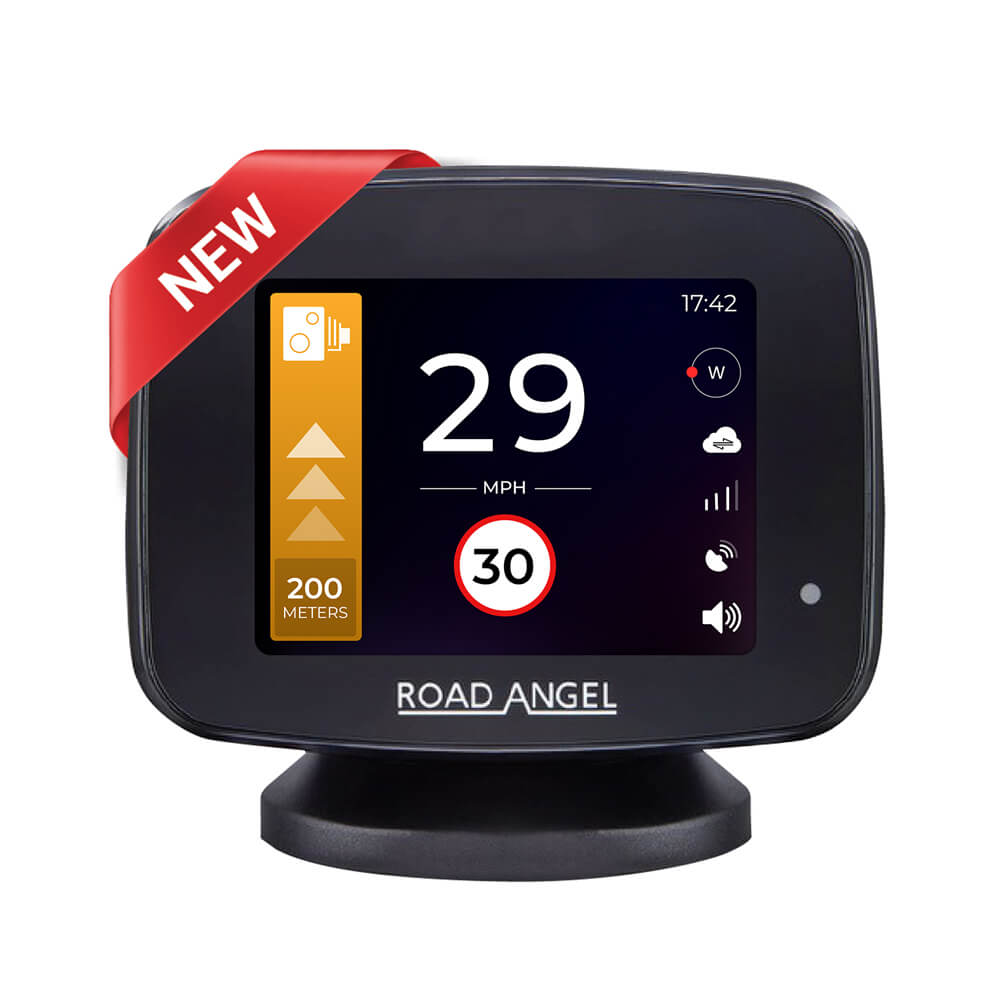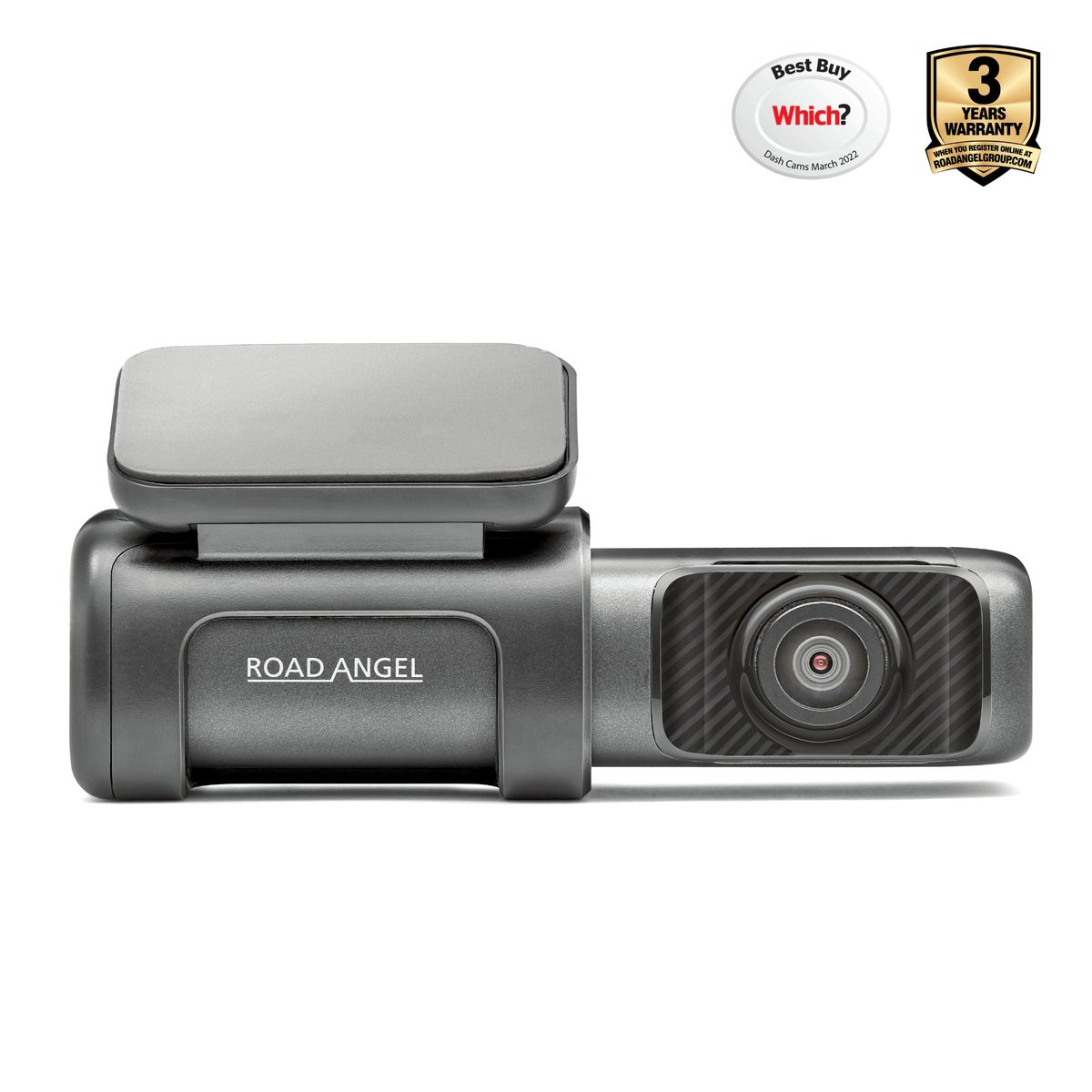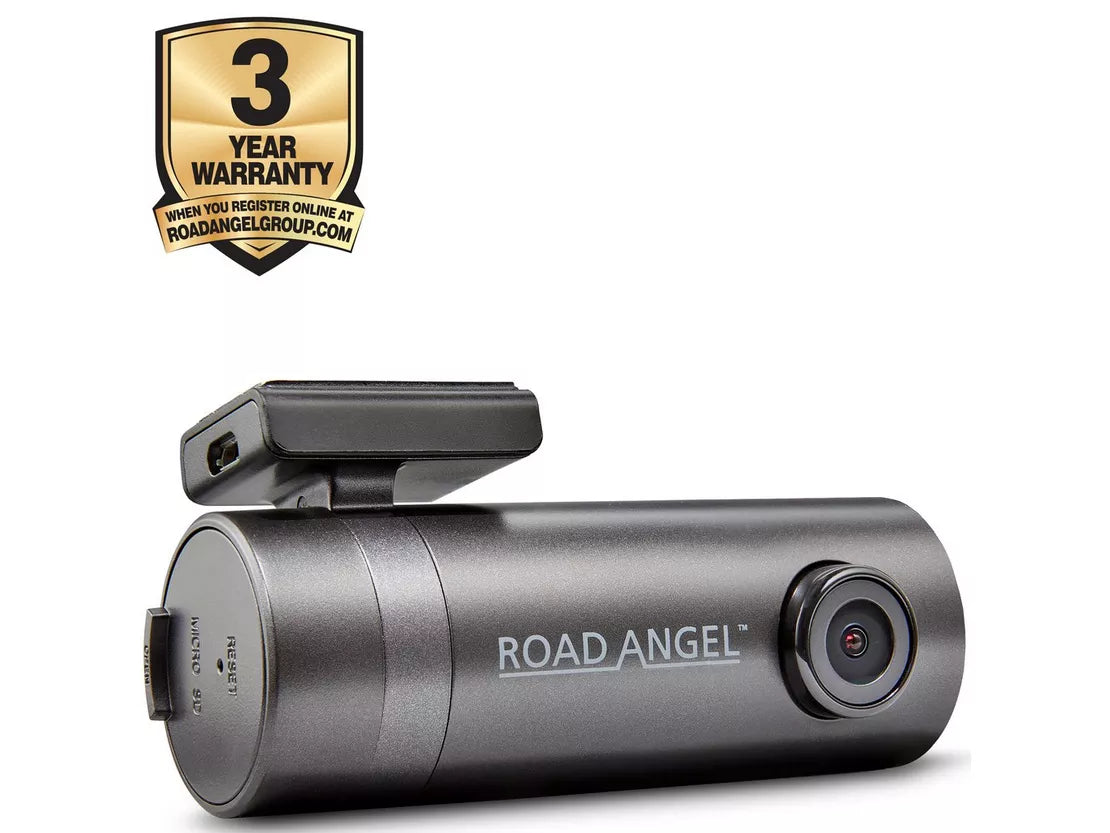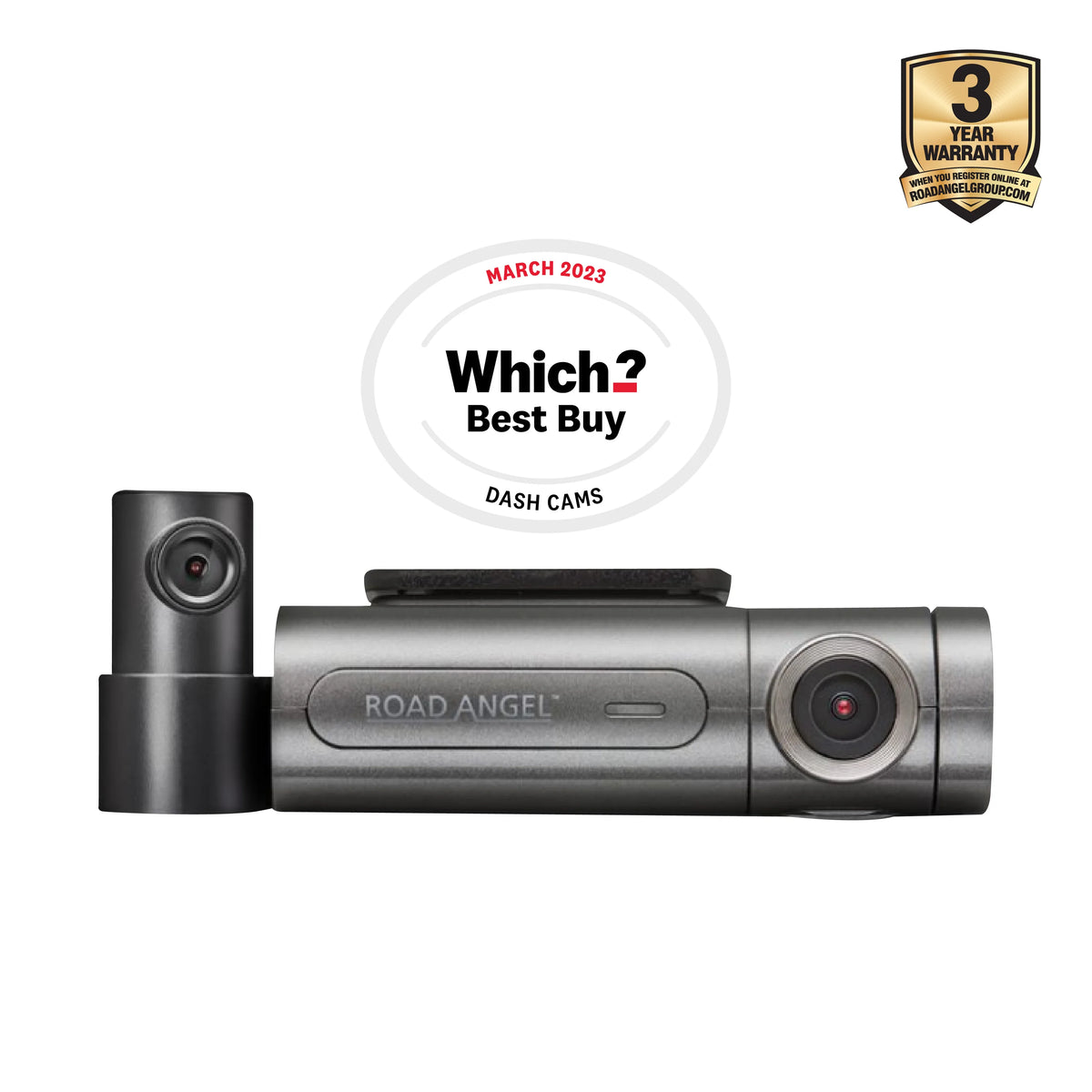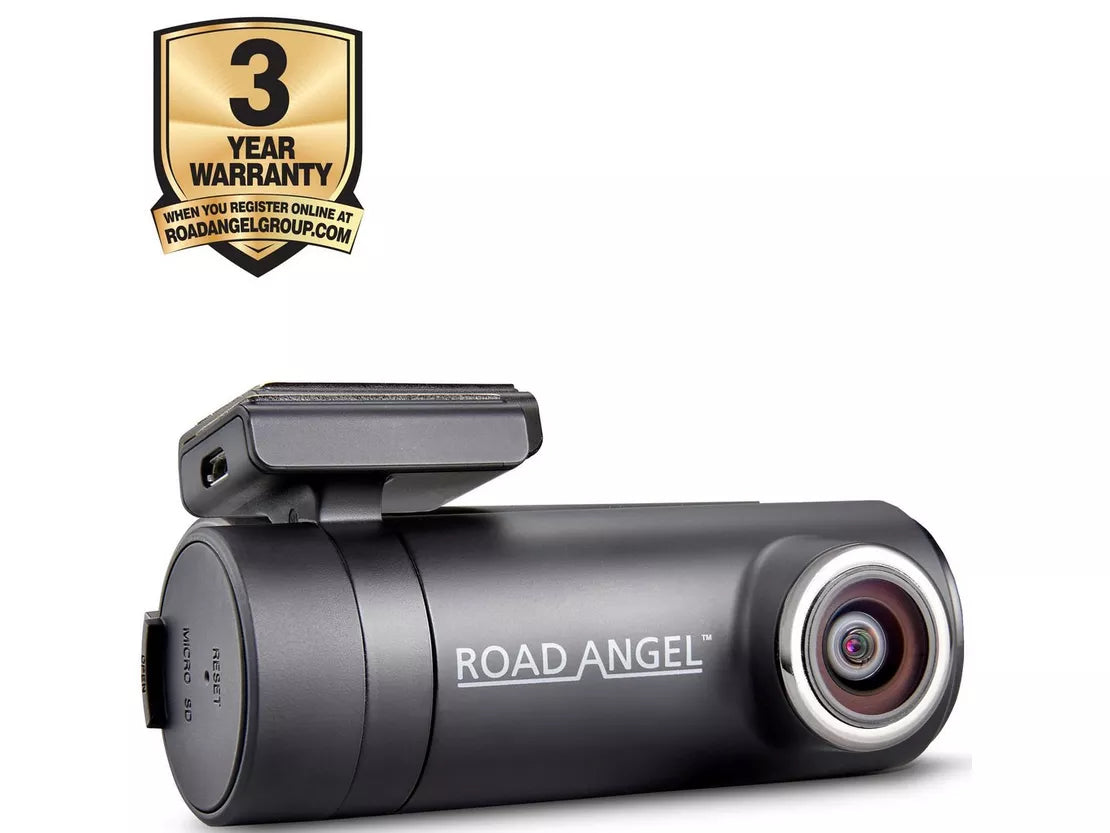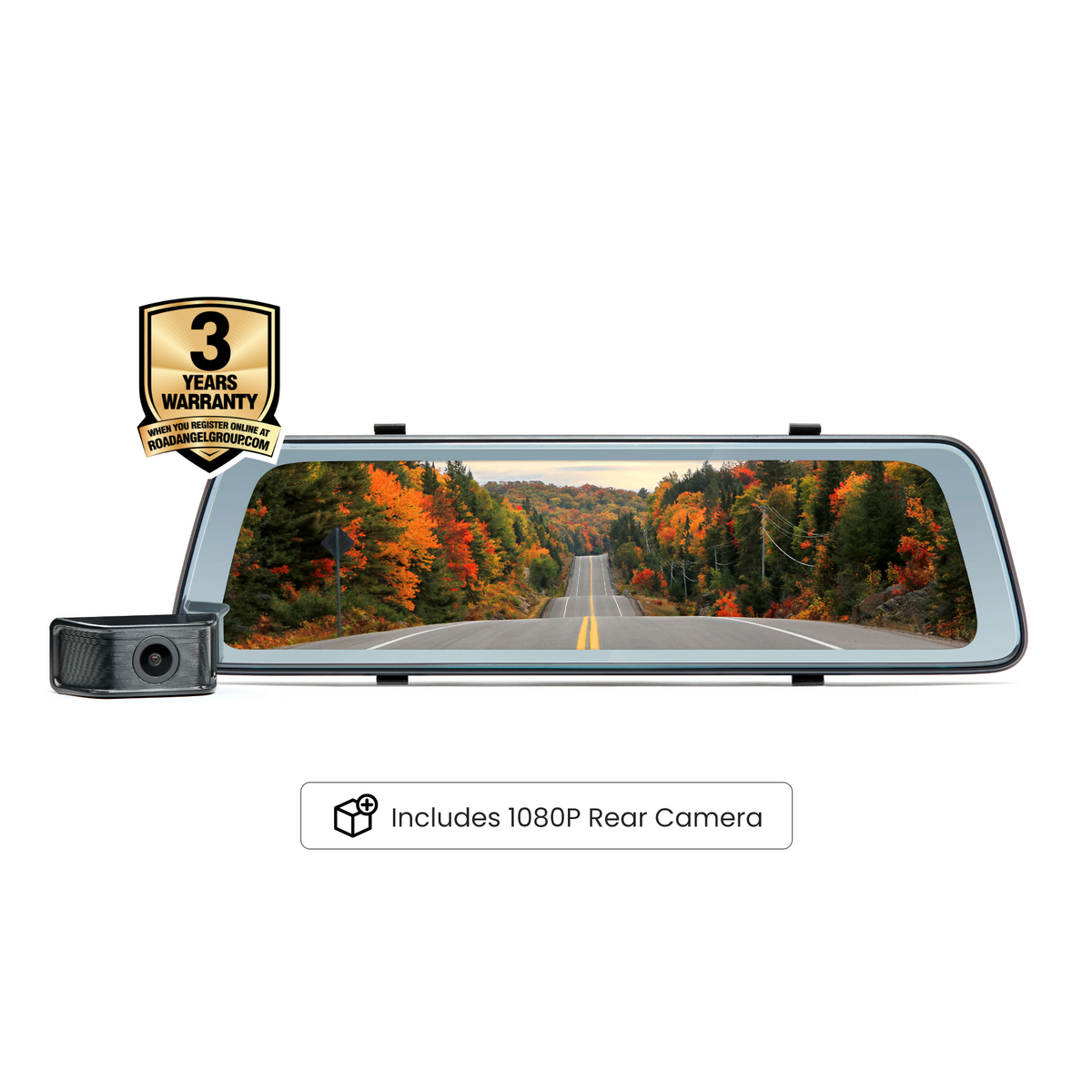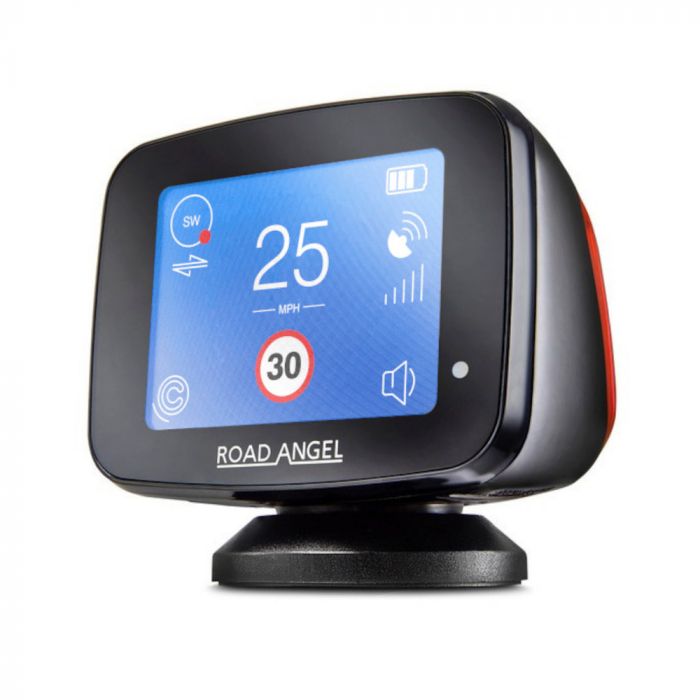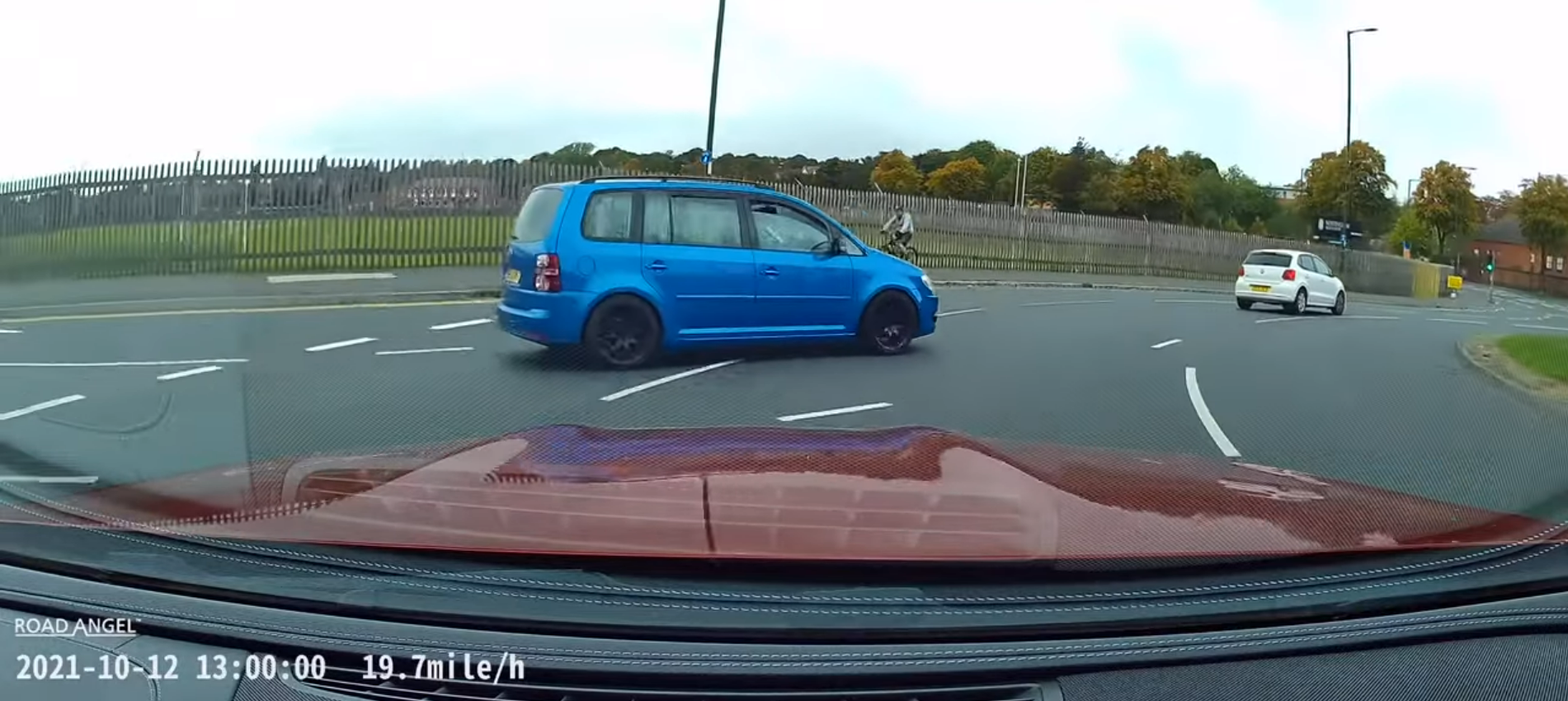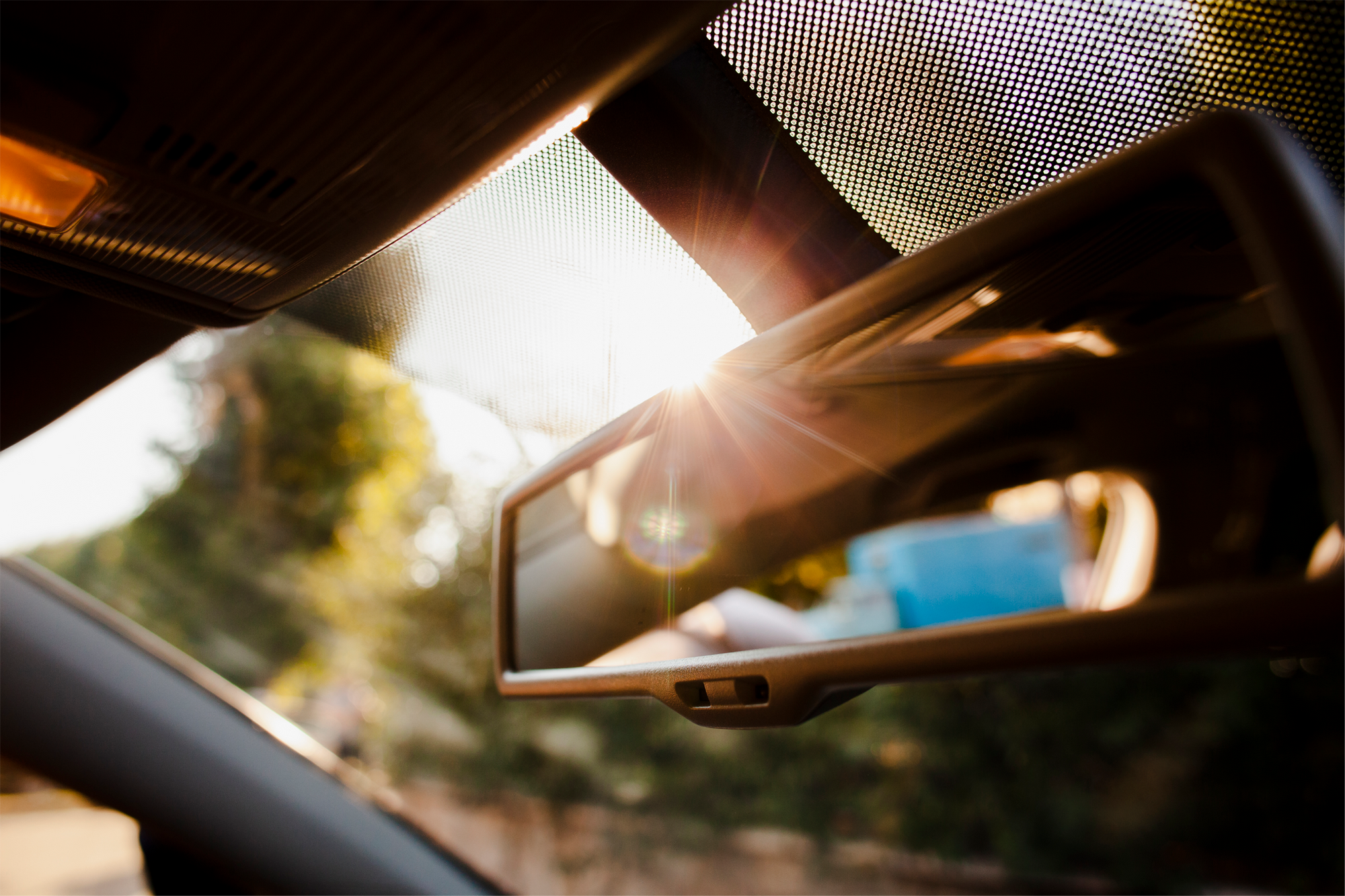So here we have it, the ultimate, definitive guide to dash cams. Buckle up and get ready to unlock the power of dash cams - whether you're passionate about road safety, documenting thrilling journeys, or seeking peace of mind while behind the wheel, you've come to the right place.
In this comprehensive guide, we'll dive into everything you need to know about dash cams - the must-have accessory for modern, everyday motorists.
Contents:
- What are Dash Cams?
- How Does a Dash Cam Work?
- Are Dash Cams Legal?
- How Long Does Dash Cam Footage Last?
- Does a Dash Cam Record Audio?
- Does a Dash Cam Need Wi-Fi?
- Can a Dash Cam Record All Night?
- Does a Dash Cam Work with Tinted Windows?
- How Are Dash Cams Powered?
- Does a Dash Cam Work When the Car is Off?
- How to Transfer Dash Cam Video to Your Phone
- What is the Best Dash Cam?
- How to Install a Dash Cam
- Where to Mount a Dash Cam
- Does Having a Dash Cam Lower Insurance?
- Do You Have to Tell Insurance About a Dash Cam?
- Does a Dash Cam Void Warranty?
- Can Dash Cam Footage be Used for Speeding?
- Can Dash Cam Footage be Used Against You?
- Can You Report Drivers with Dash Cam Footage?
- Can Police Prosecute with Dash Cam Footage?
What are Dash Cams?
Dash cams are like your own, little, personal road warriors. They're these awesome little devices that you can stick on your car's dashboard or windshield to capture all the crazy stuff that happens while you're out there conquering the roads. They're basically your second pair of eyes on the road, recording everything from "fender benders" through to jaw-dropping scenic drives through the peak district.
Dash cams can actually come in super handy when it comes to insurance claims, proving your innocence in case of an accident, or even catching some wild action on the go. So, if you're all about capturing epic moments and keeping yourself protected, a dash cam will be your new favourite sidekick on the road.
How Does a Dash Cam Work?

Okay, so if you don't know what a dash cam is - here's the lowdown on how dash cams work and what they're all about.
Dash cams are clever little devices equipped with cameras that record anything and everything that goes down while you're cruising around in your vehicle. They continuously capture video footage of the road ahead (and sometimes the rear as well) as you drive. This footage is stored on a memory card or internal storage, creating a visual record of your journey.
Dash cams are like your personal eyewitness, providing valuable evidence in case of accidents, insurance claims, or any unexpected incidents on the road. They're all about keeping you protected, giving you peace of mind, and capturing those crazy moments that you can share or look back on later. So, whether you're a thrill-seeker, a cautious driver, or just someone who wants an extra layer of security whilst driving, a dash cam has got your back and is ready to roll with you, anywhere.
Are Dash Cams Legal?
Yes, dash cams are legal in the UK.
Using a dash cam to record video footage while driving is generally considered legal, as long as it complies with data protection laws and privacy regulations. However, there are a few important guidelines to keep in mind. The Information Commissioner's Office (ICO) has issued recommendations for the use of dash cams, which include using them responsibly, respecting the privacy of others, and using the footage only for legitimate purposes.
It's also essential to ensure that the dash cam does not obstruct your view of the road, and you should avoid recording audio without consent, as it may infringe on further privacy laws. Here at Road Angel, we recommend familiarising yourself with the specific regulations and guidelines in your area, as they can vary slightly depending from region to region.
How Long Does Dash Cam Footage Last?
The duration for which dash cam footage lasts is dependent on a few factors: the storage capacity of the memory card, the video resolution and quality settings of the recordings, and whether the dash cam is set to overwrite older footage when the storage is full.
The vast majority of modern dash cams typically use loop recording, which means they continuously record in a loop, overwriting the oldest footage when the memory card storage is full. This ensures that you always have the most recent recordings available. The length of the loop depends on the size of the memory card and the resolution settings.
For example, with a 32GB memory card and recording at 1080p resolution, the footage can last approximately 4-6 hours. However, if you reduce the resolution or lower the quality settings, you can extend the recording time, although we typically advise against this to conserve the quality and viability or the footage. Additionally, some dash cams have options to adjust the loop duration or set specific file sizes for each recording segment.
If an incident occurs, it's important to save the relevant footage immediately to prevent it from being overwritten, but most dash cams have features like "emergency recording" or "incident lock" that protect specific files from being deleted during the looping process.
Does a Dash Cam Record Audio?

In the UK, the use of dash cams that record audio is generally allowed, but there are some considerations to keep in mind. The Data Protection Act and the General Data Protection Regulation (GDPR) govern the collection, storage, and use of personal data, including audio recordings.
According to the Information Commissioner's Office (ICO), if you use a dash cam with audio recording capabilities, you should be cautious about capturing conversations or other private information without consent, as it may infringe on the privacy rights of individuals. It is generally recommended to inform passengers or individuals who may be recorded that audio is being captured.
When using a dash cam in the UK, it is important to strike a balance between your legitimate interests in recording for safety or evidence purposes and respecting the privacy of others. It's a good practice to review and follow the guidelines and recommendations provided by the ICO to ensure compliance with data protection laws.
Does a Dash Cam Need Wi-Fi?
No, a dash cam does not necessarily need Wi-Fi to function. Dash cams primarily operate as standalone devices that record video footage onto a memory card or internal storage. The absence of Wi-Fi connectivity does not impact their core functionality to work as a dash cam.
However, some modern dash cam models do offer Wi-Fi capabilities as an additional feature. Wi-Fi connectivity allows you to connect your dash cam to a smartphone or other compatible devices through a dedicated app. This enables you to transfer footage wirelessly, view real-time recordings, adjust settings, and sometimes even access additional features or settings on your dash cam.
Can a Dash Cam Record All Night?
Yes, many dash cams have the capability to record continuously throughout the night. However, it depends on the specific features and settings of the dash cam.
Dash cams typically use loop recording, where they continuously record video footage in segments or loops. When the storage space is full, the oldest footage is overwritten with new recordings. This loop recording feature allows dash cams to continuously capture footage without requiring manual intervention.
To ensure continuous recording through the night, it's important to consider a few factors:
-
Power source: Ensure that your dash cam is hardwired to the electronics, so that the dash cam remains active even when the vehicle is turned off. Special hardwiring kits are available so you can achieve this.
-
Memory card capacity: Make sure to use a memory card with sufficient storage capacity to accommodate the desired recording duration. High-resolution recordings and longer recording times require larger memory cards.
-
Parking mode: Some dash cams have a specific parking mode feature designed to monitor and record events when the vehicle is parked. This mode uses various methods to detect motion or impact, such as G-sensors, motion sensors, or time-lapse recording. When an event is detected, the dash cam is triggered to start recording, capturing any incidents or unusual activity that may occur around the parked vehicle.
Does a Dash Cam Work with Tinted Windows?

Dash cams can work effectively with tinted windows, as long as you consider proper placement and choose a dash cam with suitable features for different lighting conditions. It's recommended to refer to the dash cam manufacturer's guidelines or consult their customer support if you have any concerns about using a dash cam with tinted windows.
-
Placement: It's essential to ensure that you mount the dash cam in a position that provides an unobstructed view of the road. Avoid mounting it directly on heavily tinted areas, such as the darkest portion of the window or on highly reflective tint film, as this may affect the clarity of the captured footage.
-
Lighting conditions: Tinted windows can affect the amount of light that enters the vehicle. In low-light or nighttime conditions, the tinting may reduce the overall brightness, which can impact the clarity and visibility of the recorded footage. It's important to choose a dash cam with good low-light performance or night vision capabilities to mitigate any potential issues.
-
Infrared (IR) filters: Some dash cams use infrared (IR) filters to enhance the image quality in challenging lighting conditions. If your tinted windows have IR filtering properties, it may affect the effectiveness of the IR filter on the dash cam. It's advisable to check the compatibility of the dash cam with tinted windows and IR filters if you specifically require that feature.
How Are Dash Cams Powered?
Dash cams are typically powered through 1 of 3 different methods. The most common power sources for dash cams include:
-
Cigarette lighter adapter: Many dash cams come with a power cable that can be plugged into the vehicle's cigarette lighter socket or accessory power outlet. This method allows the dash cam to draw power from the vehicle's electrical system while the engine is running. The cable may have a built-in power adapter or voltage regulator to ensure the proper power supply to the dash cam.
-
Hardwiring: Hardwiring is an alternative method that involves connecting the dash cam directly to the vehicle's fuse box or electrical system. This method provides a more permanent installation and allows the dash cam to receive power even when the vehicle is turned off. It typically requires a dash cam hardwiring kit that includes a power cable, fuse taps, and connectors. Hardwiring often involves connecting the dash cam to an accessory or constant power source, depending on the desired functionality and parking mode capabilities.
-
Battery-powered: Some dash cams have built-in batteries that can power the device for a limited time without the need for a constant external power source. Battery-powered dash cams are typically used in parking mode or when the vehicle is turned off. However, it's important to note that the battery capacity may vary between models, and continuous use may drain the battery relatively quickly. In such cases, it is necessary to recharge the dash cam periodically or connect it to a power source for extended use.
Does a Dash Cam Work When the Car is Off?
Yes! At Road Angel, we prefer state-of-the-art dash cams that are hard-wired, but utilise parking mode.
Parking mode is a feature available in many dash cams that allows them to continue recording even when the vehicle is parked and the engine is turned off. It provides an additional layer of security and surveillance for your vehicle while it is unattended.
When activated, parking mode utilises various methods to detect events or motion around the parked vehicle. Common detection mechanisms include:
-
G-sensor: The G-sensor detects sudden impacts or movements, such as a collision or someone bumping into the vehicle. When an event is detected, the dash cam is triggered to start recording and save the footage.
-
Motion sensor: The motion sensor detects changes in the surrounding environment, such as movement in front of the vehicle. If motion is detected, the dash cam starts recording to capture any relevant events.
-
Time-lapse recording: Some dash cams use time-lapse recording in parking mode, capturing frames at specific intervals to conserve storage space while still monitoring for events. When an event occurs, they switch to regular recording to capture detailed footage.
Parking mode is particularly useful for capturing potential accidents, hit-and-runs, vandalism, or theft attempts that may occur while your vehicle is parked and unattended. It provides valuable evidence and can help identify perpetrators or determine liability in case of an incident.
How to Transfer Dash Cam Video to Your Phone

So this is a great question, for those less experienced with technology. We've devised some instructions here, which aren't device specific, which may be of use to you:
-
Check dash cam compatibility:
Ensure that your dash cam is compatible with transferring video to a phone. Some dash cams have built-in Wi-Fi or companion apps specifically designed for wireless video transfer. If your dash cam doesn't have this capability, you may need to explore alternative methods such as removing the memory card. -
Wi-Fi transfer (if available):
a. Install the companion app: If your dash cam supports Wi-Fi transfer, download and install the corresponding app on your phone from the respective app store (e.g., Google Play Store or Apple App Store).
b. Connect your phone and dash cam: Turn on Wi-Fi on your phone and access the Wi-Fi settings. Look for the Wi-Fi network name or SSID associated with your dash cam. Connect your phone to that network.
c. Open the companion app: Launch the companion app on your phone. It should detect and establish a connection with your dash cam.
d. Follow the app instructions: Once connected, the app will provide instructions on how to browse and transfer video files from your dash cam to your phone. Typically, you can select the desired videos and initiate the transfer within the app's interface. -
Memory card transfer (if Wi-Fi not available):
a. Power off your dash cam: Ensure that your dash cam is powered off before removing the memory card to avoid potential data corruption.
b. Locate and remove the memory card: Dash cams usually store recorded footage on a removable memory card (e.g., microSD card). Locate the memory card slot on your dash cam and carefully remove the memory card.
c. Insert the memory card into a compatible adapter: If your phone has a microSD card slot, insert the memory card directly. Otherwise, you may need an adapter to convert the memory card to a compatible format (e.g., microSD to SD card adapter) to fit into your phone's card slot or use a USB card reader.
d. Connect the adapter to your phone: Insert the memory card (or adapter) into the corresponding slot on your phone or connect the USB card reader to your phone's USB port.
e. Access the video files: Once your phone recognizes the memory card, navigate to the file explorer or gallery app. You should be able to locate and access the video files stored on the memory card.
f. Transfer the videos: Select the desired video files and choose the option to copy or move them to your phone's internal storage or preferred location.
What is the Best Dash Cam?
We'd easily say the Road Angel Halo Ultra, and that's not even us being biased!
Here's a video, just to show you how good it really is:
The Road Angel Halo Ultra has features such as:
- 4K Recording
- Loop Recording
- SONY IMX415 image sensor
- 64GB eMMc (embedded multi media card) built-in memory
- 5GHz Wi-Fi support
- ADAS technology (built-in traffic conditions)
- GPS telematics
- Parking mode
- 140° wide angle lens
- G-Sensor
We don't think the Road Angel Halo Ultra can be beaten, especially when you consider the price - £199.99! Check out the Road Angel Halo Ultra below:
How to Install a Dash Cam
Installing a dash cam is a job we like to leave up to the experts, our partners: Halfords. We don't fit dash cams ourselves, but we've put our quality dash cams into the hands of our trusted friend over at Halfords - and boy they're good at installing our dash cams.
If you want to fit your dash cam yourself, here's a brief instruction list:
- Choose a suitable location on your windshield and mount the dash cam securely.
- Connect the power cable to the dash cam, either through a cigarette lighter adapter or by hardwiring it to the vehicle's electrical system.
- Hide the cables along the windshield's edge and secure them with clips or adhesive clips.
- Adjust the dash cam's position for an optimal view of the road.
- Test the installation by powering on the dash cam and ensuring it starts recording and functioning correctly.
If you'd like an extended version of the above list, then take a look at our dash cam installation blog by clicking the button below:
Where to Mount a Dash Cam

A dash cam is typically mounted on the windshield of a vehicle. Here are some common placement options:
-
Behind the rear-view mirror: This is a popular location as it keeps the dash cam relatively discreet and provides a clear view of the road ahead.
-
On the passenger side of the windshield: Placing the dash cam on the passenger side can minimise obstruction to the driver's view and still captures the road effectively.
When choosing a mounting location, consider the following:
-
Visibility: Ensure that the dash cam has an unobstructed view of the road without hindering your line of sight or blocking any sensors, such as rain or light sensors behind the rear-view mirror.
-
Legal requirements: Familiarise yourself with any laws or regulations regarding dash cam placement to ensure compliance.
-
Reflection and glare: Be mindful of reflections or glare caused by the dash cam's position or mounting accessories, as these may affect the quality of the recorded footage.
Does Having a Dash Cam Lower Insurance?
Having a dash cam may potentially lower insurance premiums for some individuals, but it depends on various factors, including insurance providers and their policies. Here are a few points to consider:
-
Accident evidence: A dash cam can provide valuable evidence in case of accidents or incidents on the road. Clear video footage can help establish liability and support insurance claims, potentially expediting the claims process.
-
Fraud prevention: Dash cams can deter fraudulent claims or staged accidents, which are unfortunately not uncommon. By capturing incidents accurately and clearly, dash cams can help combat insurance fraud, which can positively impact insurance costs for everyone.
-
Driver behaviour: Some insurance providers offer usage-based insurance programs where driving behaviour is monitored. If your dash cam records your driving habits and demonstrates responsible and safe driving, you may be eligible for discounted insurance rates based on your actual driving performance.
-
Discounts and incentives: Some insurance companies offer specific discounts or incentives for installing a dash cam. It's worth checking with your insurance provider to see if they offer any such programs.
While dash cams can have potential benefits, it's essential to note that not all insurance providers consider dash cams for premium reductions. It's recommended to contact your insurance provider directly to inquire about their policies regarding dash cams and any potential impact on insurance premiums.
Do You Have to Tell Insurance About a Dash Cam?
We'd personally say yes - just to be safe, but realistically, whether or not you need to inform your insurance company about the presence of a dash cam depends on their specific requirements and policies. We advise reading through the list below to make an informed decision whether you should or not.
-
Review your insurance policy: Read through your insurance policy or contact your insurance provider to understand their requirements regarding dash cams. Some insurance companies may explicitly ask for information regarding additional safety devices or modifications to your vehicle, including the installation of a dash cam.
-
Transparency and disclosure: It's generally recommended to be transparent with your insurance company and disclose any relevant information that may impact your policy or claims. Providing accurate and complete information helps maintain the integrity of your insurance coverage.
-
Potential benefits: Informing your insurance company about your dash cam may have potential benefits. It can serve as evidence in case of accidents, potentially expediting the claims process and supporting your position in the event of a dispute. Some insurance providers may also offer specific discounts or incentives for dash cam installations.
-
Non-disclosure implications: Failing to disclose the presence of a dash cam when required by your insurance provider may have consequences. It could potentially lead to policy non-compliance, denial of claims, or even cancellation of your policy if non-disclosure is discovered later.
Does a Dash Cam Void Warranty?

Installing a dash cam in your vehicle typically does not void the warranty. The warranty provided by the manufacturer generally covers defects in materials or workmanship and should not be affected by the installation of something as small as a dash cam, which is considered an aftermarket accessory.
Baring that in mind, it's still essential to review the warranty terms and conditions provided by the vehicle manufacturer, just to confirm if any specific modifications or alterations to the vehicle may impact the warranty coverage. Some manufacturers may have specific clauses or restrictions regarding modifications, however small, so it's advisable to consult the warranty documentation or contact the manufacturer directly to clarify any concerns.
It's also worth noting that the warranty of the dash cam itself may vary, depending on the manufacturer or brand. Be sure to review the warranty information provided by the dash cam manufacturer to understand the coverage and any conditions that may apply to the dash cam itself.
Can Dash Cam Footage be Used for Speeding?
A dash cam can capture footage of your driving, including instances of speeding; however, it's important to note that the primary purpose of a dash cam is for recording video evidence of incidents on the road, such as accidents or other relevant events.
The use of dash cam footage as witness evidence, varies depending on the the quality and viability of the footage. In some cases, dash cam footage may be used as supporting evidence in speeding-related cases or traffic violations, but specific guidelines and procedures for using dash cam footage as evidence can vary.
Can Dash Cam Footage be Used Against You?
Yes, dash cam footage can potentially be used against you in certain situations, as the primary purpose of dash cam footage is to capture events on the road, including any incidents or violations - may include your own. Here are a few points to consider:
-
Traffic violations: If you are involved in a traffic violation or accident, and your actions are captured by the dash cam, the footage can be used as evidence by law enforcement or insurance companies. This includes instances such as speeding, running a red light, or reckless driving.
-
Insurance claims: If you file an insurance claim for an accident or other incidents, the dash cam footage can be reviewed by insurance adjusters as part of the claims investigation. The footage may influence their assessment of liability and the outcome of the claim.
-
Legal proceedings: In the event of legal proceedings, such as a court case or dispute, dash cam footage can be submitted as evidence by either party involved. The footage may be used to support or challenge claims, establish fault or liability, or provide a visual record of the incident.
If you'd like to learn more about about dash cams, speeding and using dash cam footage as evidence, then click on the link below:
Can You Report Drivers with Dash Cam Footage?
Yes, you can report drivers using dash cam footage in the UK. If you capture an incident or observe dangerous driving on the road with your dash cam, you can submit the footage as evidence to the appropriate authorities for further investigation.
Here are some steps you can take:
-
Safely capture the footage: Ensure that your dash cam is recording and properly captures the incident or behaviour you want to report. Make sure the footage is clear and includes relevant details such as registration plates, location, and time.
-
Make note of details: Take note of any additional details related to the incident, such as the date, time, location, and description of the behaviour or event captured in the footage. These details can be helpful when reporting the incident.
-
Report to the appropriate authorities: Depending on the nature of the incident, you can report it to the relevant authority. For example:
- Dangerous driving or road traffic offenses: Contact your local police force and provide them with the footage and details of the incident.
- Other traffic-related concerns: You can report incidents to local authorities responsible for traffic management or safety, such as your local council or Highways England.
Can Police Prosecute with Dash Cam Footage?
Yes, dash cam footage can be used by police as evidence to support prosecutions in certain situations. This is seen as witness evidence in court. The admissibility and use of dash cam footage as evidence depends on several factors.
Here are a few points to consider:
-
Corroborating evidence: Dash cam footage can serve as valuable corroborating evidence in cases where an offense or incident is captured on video. It can help provide a visual record of events and support the testimony of witnesses or involved parties.
-
Traffic violations: In cases of traffic violations, such as reckless driving, hit-and-run incidents, or red light violations, dash cam footage showing the offense can be used by police to issue citations or pursue prosecutions.
-
Criminal activities: Dash cam footage capturing criminal activities, such as theft, vandalism, or assault, can be submitted to the police as evidence. The footage may aid in identifying suspects and building a case against them.
-
Discretion of authorities: Ultimately, the decision to use dash cam footage as evidence and pursue prosecutions rests with the police and relevant legal authorities. They will evaluate the footage's relevance, credibility, and adherence to legal requirements before deciding how to proceed.






